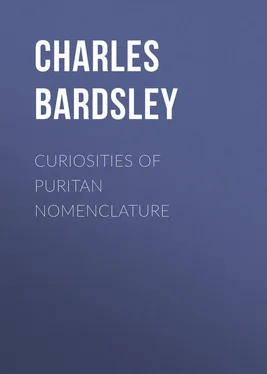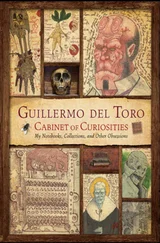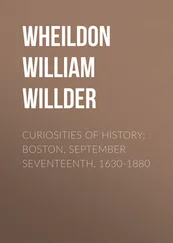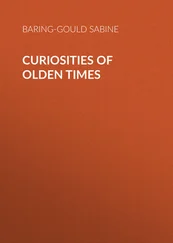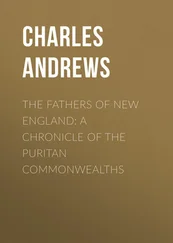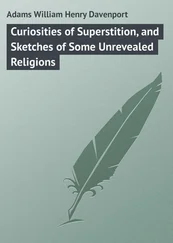Charles Bardsley - Curiosities of Puritan Nomenclature
Здесь есть возможность читать онлайн «Charles Bardsley - Curiosities of Puritan Nomenclature» — ознакомительный отрывок электронной книги совершенно бесплатно, а после прочтения отрывка купить полную версию. В некоторых случаях можно слушать аудио, скачать через торрент в формате fb2 и присутствует краткое содержание. ISBN: , Жанр: foreign_antique, foreign_prose, на английском языке. Описание произведения, (предисловие) а так же отзывы посетителей доступны на портале библиотеки ЛибКат.
- Название:Curiosities of Puritan Nomenclature
- Автор:
- Жанр:
- Год:неизвестен
- ISBN:http://www.gutenberg.org/ebooks/39284
- Рейтинг книги:3 / 5. Голосов: 1
-
Избранное:Добавить в избранное
- Отзывы:
-
Ваша оценка:
- 60
- 1
- 2
- 3
- 4
- 5
Curiosities of Puritan Nomenclature: краткое содержание, описание и аннотация
Предлагаем к чтению аннотацию, описание, краткое содержание или предисловие (зависит от того, что написал сам автор книги «Curiosities of Puritan Nomenclature»). Если вы не нашли необходимую информацию о книге — напишите в комментариях, мы постараемся отыскать её.
Curiosities of Puritan Nomenclature — читать онлайн ознакомительный отрывок
Ниже представлен текст книги, разбитый по страницам. Система сохранения места последней прочитанной страницы, позволяет с удобством читать онлайн бесплатно книгу «Curiosities of Puritan Nomenclature», без необходимости каждый раз заново искать на чём Вы остановились. Поставьте закладку, и сможете в любой момент перейти на страницу, на которой закончили чтение.
Интервал:
Закладка:
“Johanna Ibot-doghter, iiiid.
“Willelmus Kene, et Ibota uxor ejus, iiiid.
“Thomas Gaylyour, et Ebbot sa femme, iiiid.”
Cecilia became Sissot or Cissot:
“Willelmus Crake, & Cissot sa femme, iiiid.” – W. D. S.
In the “Manor of Ashton-under-Lyne” (Chetham Society), penned fortunately for our purpose in every-day style, we have such entries as —
“Syssot, wife of Patrick.
“Syssot, wife of Diccon Wilson.
“Syssot, wife of Thomas the Cook.
“Syssot, wife of Jak of Barsley.”
Four wives named Cecilia in a community of some twenty-five families will be evidence enough of the popularity of that name. All, however, were known in every-day converse as Sissot.
Of other girl-names we may mention Mabel, which from Mab became Mabbott; Douce became Dowcett and Dowsett; Gillian or Julian, from Gill or Jill (whence Jack and Jill), became Gillot, Juliet, and Jowett; Margaret became Margett and Margott, and in the north Magot. Hence such entries from the Yorkshire parchments, already quoted, as —
“Thomas de Balme, et Magota uxor ejus, chapman, iiiid.
“Hugo Farrowe, et Magota uxor ejus, smyth, iiiid.
“Johannes Magotson, iiiid.”
Custance became Cussot, from Cuss or Cust, the nick form. The Hundred Rolls contain a “Cussot Colling” – a rare place to find one of these diminutives, for they are set down with great clerkly formality.
From Lettice, Lesot was obtained:
“Johan Chapman, & Lesot sa femme, iiiid.” – W. D. S.
And Dionisia was very popular as Diot:
“Johannes Chetel, & Diot uxor ejus, iiiid.
“Willelmus Wege, & Diot uxor ejus, iiiid.” – W. D. S.
Of course, it became a surname:
“Robertus Diot, & Mariona uxor ejus, iiiid.
“Willelmus Diotson, iiiid.” – W. D. S.
It is curious to observe that Annot, which now as Annette represents Anne, in Richard II.’s day was extremely familiar as the diminutive of Annora or Alianora. So common was Annot in North England that the common sea-gull came to be so known. It is a mistake to suppose that Annot had any connection with Anna. One out of every eight or ten girls was Annot in Yorkshire at a time when Anna is never found to be in use at all:
“Stephanus Webester, & Anota uxor ejus, iiiid.
“Richard Annotson, wryght, iiiid.” – W. D. S.
As Alianora and Eleanora are the same, so were Enot and Anot:
“Henricus filius Johannis Enotson, iiiid.” – W. D. S.
Again, Eleanor became Elena, and this Lina and Linot. Hence in the Hundred Rolls we find “Linota atte Field.” In fact, the early forms of Eleanor are innumerable. The favourite Sibilla became Sibot:
“Johannes de Estwode, et Sibota uxor ejus, iiiid.
“Willelmus Howeson, et Sibbota uxor ejus, iiiid.” – W. D. S.
Mary not merely became Marion, but Mariot, and from our surnames it would appear the latter was the favourite:
“Isabella serviens Mariota Gulle, iiiid.” – W. D. S.
“Mariota in le Lane.” – Hundred Rolls.
Eve became Evot, Adam and Eve being popular names. In the will of William de Kirkby, dated 1391, are bequests to “Evæ uxori Johannes Parvying” and “Willielmo de Rowlay,” and later on he refers to them again as the aforementioned “Evotam et dictum Willielmum Rowlay” (“Test. Ebor.,” i. 145. Surtees Society).
But the girl-name that made most mark was originally a boy’s name, Theobald. Tibbe was the nick form, and Tibbot the pet name. Very speedily it became the property of the female sex, such entries as Tibot Fitz-piers ending in favour of Tibota Foliot. After the year 1300 Tib, or Tibet, is invariably feminine. In “Gammer Gurton’s Needle,” Gammer says to her maid —
“How now, Tib? quick! let’s hear what news thou hast brought hither.” – Act. i. sc. 5.
In “Ralph Roister Doister,” the pet name is used in the song, evidently older than the play:
“Pipe, merry Annot, etc.,
Trilla, Trilla, Trillary.
Work, Tibet; work, Annot; work, Margery;
Sew, Tibet; knit, Annot; spin, Margery;
Let us see who will win the victory.”
Gib, from Gilbert, and Tib became the common name for a male and female cat. Scarcely any other terms were employed from 1350 to 1550:
“For right no more than Gibbe, our cat,
That awaiteth mice and rattes to killen,
Ne entend I but to beguilen.”
Hence both Tibet and Gibbet were also used for the same; as in the old phrase “flitter-gibbett,” for one of wanton character. Tom in tom-cat came into ordinary parlance later. All our modern Tibbots, Tibbetts, Tibbitts, Tippitts, Tebbutts, and their endless other forms, are descended from Tibbe.
Coming to boys’ names, all our Wyatts in the Directory hail from Guiot, 10 10 Guion was not half so popular in England as Guiot. There are fifty-five Wyatts to three Wyons in the London Directory (1870). If Spenser had written of Guyon two centuries earlier, this might have been altered. Guy Fawkes ruined Guy. He can never be so popular again.
the diminutive of Guy, just as Wilmot from William:
“Adam, son of Wyot, held an oxgang of land.” – “De Lacy Inquisition.”
“Ibbote Wylymot, iiiid.” – W. D. S.
Payn is met in the form of Paynot and Paynet, Warin as Warinot, Drew as Drewet, Philip as Philpot, though this is feminine sometimes:
“Johannes Schikyn, et Philipot uxor ejus, iiiid.” – W. D. S.
Thomas is found as Thomaset, Higg (Isaac) as Higgot, Jack as Jackett, Hal (Henry) as Hallet (Harriot or Harriet is now feminine), and Hugh or Hew as Hewet:
“Dionisia Howet-doghter, iiiid.” – W. D. S.
The most interesting, perhaps, of these examples is Hamnet, or Hamlet. Hamon, or Hamond, was introduced from Normandy:
“Hamme, son of Adcock, held 29 acres of land.” – “De Lacy Inquisition,” 1311.
It became a favourite among high and low, and took to itself the forms of Hamonet and Hamelot:
“The wife of Richard, son of Hamelot.” – “De Lacy Inquisition,” 1311.
These were quickly abbreviated into Hamnet and Hamlet. They ran side by side for several centuries, and at last, like Emmot, defied the English Bible, the Reformation, and even the Puritan period, and lived unto the eighteenth century. Hamlet Winstanley, the painter, was born in 1700, at Warrington, and died in 1756. In Kent’s London Directory for 1736 several Hamnets occur as baptismal names. Shakespeare’s little son was Hamnet, or Hamlet, after his godfather Hamnet Sadler. I find several instances where both forms are entered as the name of the same boy:
“Nov. 13, 1502. Item: the same day to Hamlet Clegge, for money by him layed out … to the keper of Dachet Ferrey in rewarde for conveying the Quenes grace over Thamys there, iiis. iiiid.”
Compare this with —
“June 13, 1502. Item: the same day to Hampnet Clegge, for mone by him delivered to the Quene for hir offring to Saint Edward at Westm., vis. viiid.” – “Privy Purse Expenses, Eliz. of York,” pp. 21 and 62.
Speaking of Hamelot, we must not forget that ot and et sometimes became elot or elet . As a diminutive it is found in such dictionary words as bracelet, tartlet, gimblet, poplet (for poppet). The old ruff or high collar worn alike by men and women was styled a partlet :
“Jan. 1544. Item: from Mr. Braye ii. high collar partletts, iiis. ixd.” – “Privy Purse Expenses, Princess Mary.”
Hence partlet, a hen, on account of the ruffled feathers, a term used alike by Chaucer and Shakespeare.
In our nomenclature we have but few traces of it. In France it was very commonly used. But Hughelot or Huelot, from Hugh, was popular, as our Hewletts can testify. Richelot for Richard, Hobelot and Robelot for Robert, Crestolot for Christopher, Cesselot for Cecilia, and Barbelot for Barbara, are found also, and prove that the desinence had made its mark.
Читать дальшеИнтервал:
Закладка:
Похожие книги на «Curiosities of Puritan Nomenclature»
Представляем Вашему вниманию похожие книги на «Curiosities of Puritan Nomenclature» списком для выбора. Мы отобрали схожую по названию и смыслу литературу в надежде предоставить читателям больше вариантов отыскать новые, интересные, ещё непрочитанные произведения.
Обсуждение, отзывы о книге «Curiosities of Puritan Nomenclature» и просто собственные мнения читателей. Оставьте ваши комментарии, напишите, что Вы думаете о произведении, его смысле или главных героях. Укажите что конкретно понравилось, а что нет, и почему Вы так считаете.
